Newsletter: How a performance about California’s environment was shaped by water and fire
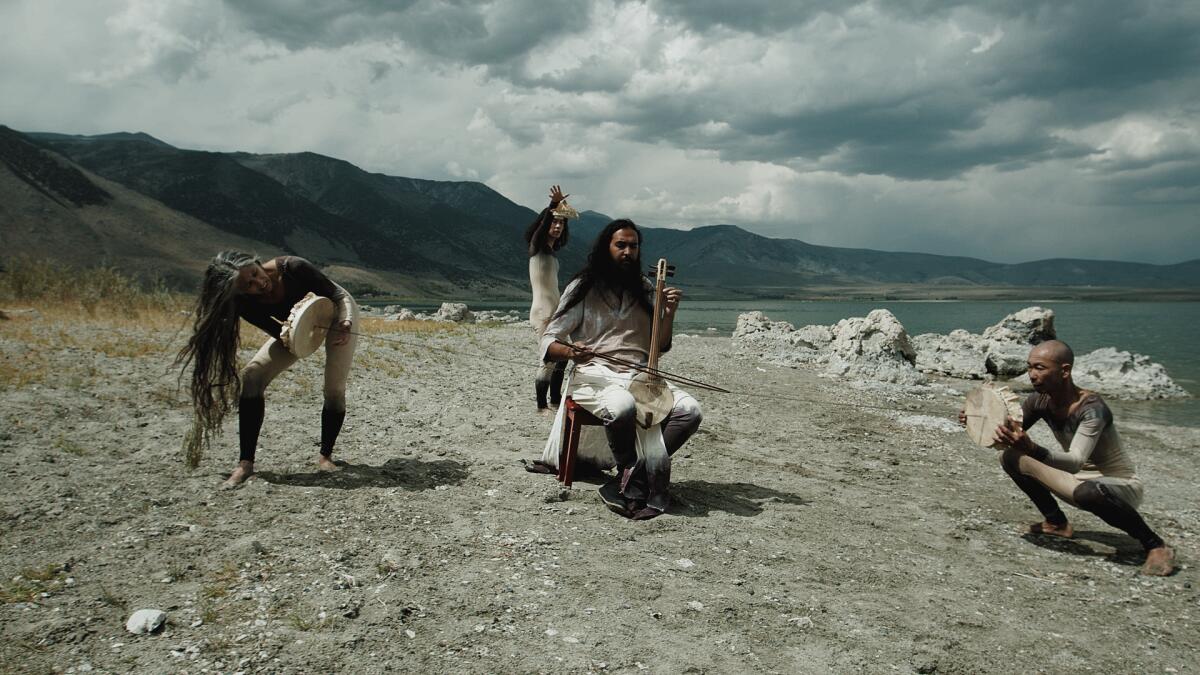
- Share via
It’s unseasonably warm in Los Angeles, and that giant sucking sound you hear is all of the moisture being vacuumed out of our collective eyeballs. I’m Carolina A. Miranda, arts and urban design columnist at the Los Angeles Times, armed with a crate of Claritin and a gallon of eyedrops, and ready to deliver all the culture news — as well as my favorite “House of Gucci” memes:
In the shadow of fire
It was purely by chance that Carmina Escobar ended up at Mono Lake for the first time. It was 2019, and fellow artist Nina Waisman had invited her to collaborate on a piece titled “internatural 1” at the South Tufa area at Mono Lake (a performance that was produced, in part, by Forest Island Project, an artist’s residency based out of nearby Mammoth Lakes).
At Mono Lake, Escobar was bowled over by the landscape, an otherworldly place of water and tufas — limestone formations that emerge from the lake bottom like rocky sentinels — all fringed by Sierra peaks. “I went there for a few days, and I’ve been 10 more times in trips there since,” she says.
Escobar, an experimental voice artist who is based in L.A. but originally hails from Mexico City, says she was intrigued by the wild nature. But also the fraught history. “It exemplifies in a concrete and poetic way our relationship to nature through water,” she says.
Namely, the draws that go to feed water-thirsty Los Angeles, exposing the lakebed and clogging the lungs of the area’s inhabitants with fine alkaline silt.
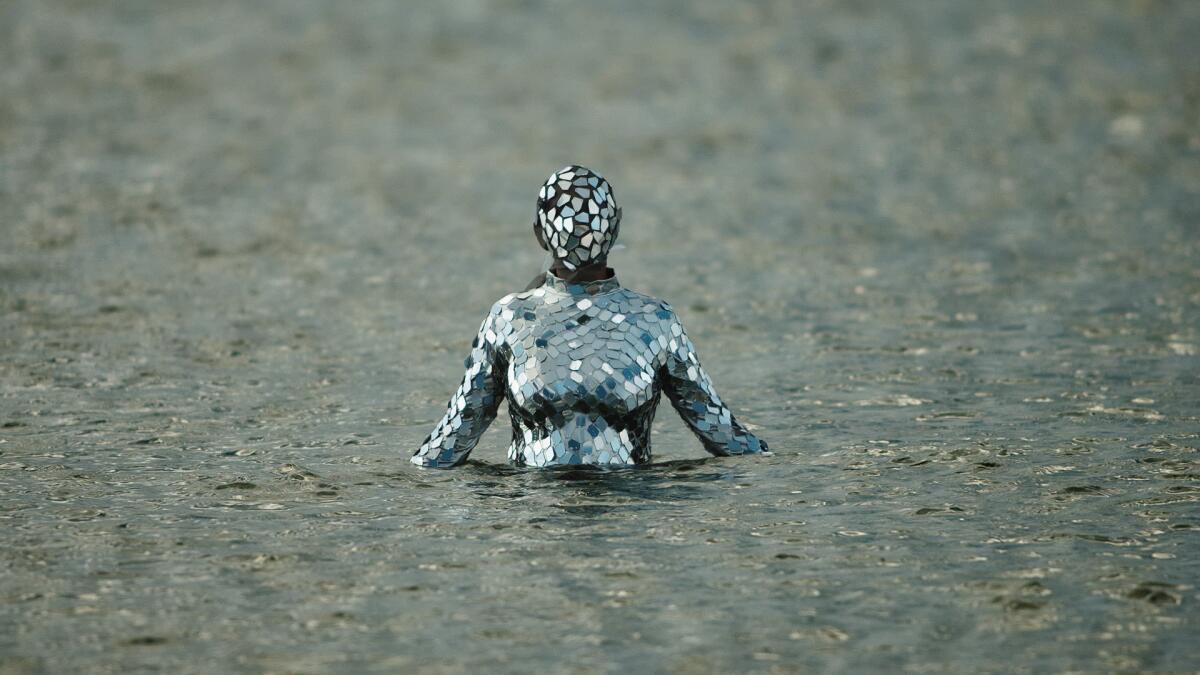
Escobar’s journeys to Mono Lake have now inspired a performance that will land at REDCAT for three nights beginning Thursday. “Bajo la Sombra del Sol,” as the piece is titled — “Under the Sun’s Shadow,” in English — is a multimedia work that will fuse film and live performance for what promises to be an ethereal piece exploring nature and ritual. Later, a recording of the entire production will be presented at the Mexican Consulate.
This is a vast undertaking, and Escobar has not done it alone. Along for the ride have been more than three dozen collaborators — including dancers, filmmakers, instrument makers, costume designers and technicians from both sides of the U.S.-Mexico border. Producing the work is Escobar’s new artistic production company, Boss Witch Productions, which she co-founded with musician and producer Madeline Falcone and musical historian Madison Heying.
Make the most of L.A.
Get our guide to events and happenings in the SoCal arts scene. In your inbox every Monday and Friday morning.
You may occasionally receive promotional content from the Los Angeles Times.
Though, as creator and director, she was technically in charge, one of Escobar’s priorities was creating a collective work: “I’m always thinking collaboratively — horizontally,” she says.
Another priority was respecting the locale, its history and its people. “I’ve done a lot of site-specific work which can be problematic,” she says. “How can you engage in a more meaningful way? In a way that goes beyond doing a performance? That isn’t just about taking or parachuting in?”
To that end, Escobar and her collaborators have engaged area residents. The idea isn’t simply to do one project and then leave, but to develop an ongoing connection. “I want to talk about the process,” she says. “Not just the product, but the process itself. It’s about forming these connections.”
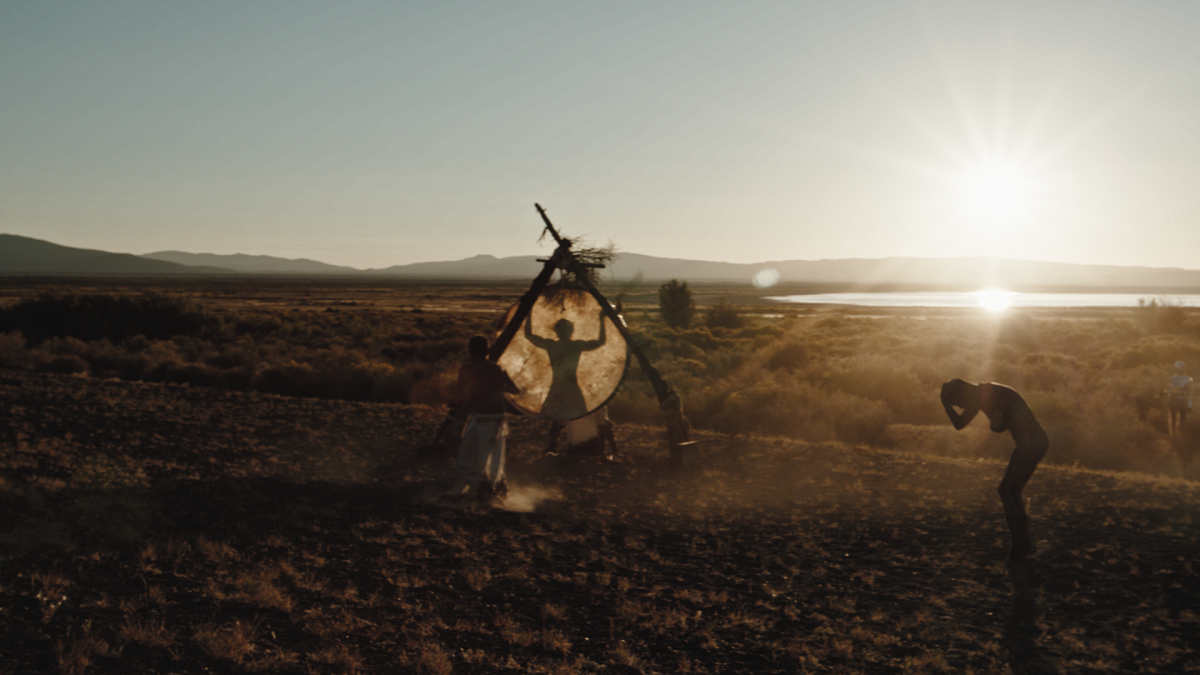
Escobar’s piece is inspired, in part, by a quote from Carl Jung: “One does not become enlightened by imagining figures of light, but by making the darkness conscious.”
The concept of darkness, of the shadow, of inhabiting shadows and casting shadows, is one she has been exploring in her work for some time. And in this case, she connects it with humanity’s urge to shape and control landscape. “It’s a monstrous thing that creates the shadow,” she says. “And that shadow is us. And it’s the collective shadow of control.”
Mono Lake, which has been relentlessly whittled into its current state of environmental calamity by humans, is a perfect example of this. Even so, it is a place that Escobar says feels sacred. “The water is a primordial soup,” she says. “It has all of these elements that form life ... It’s where things can be born.”
Upon her repeat visits to Mono Lake, she was filled with a vision of fellow singer and sometime collaborator Dorian Wood emerging like a nude Venus from the lake. “Bajo la Sombra” is an attempt to make that vision a reality. “I so admire her,” says Escobar of Wood. In the work, Wood will indeed make an appearance — as a representation of the world.
“Bajo la Sombra” will consist of live performance against the backdrop of a film that the artists recorded in September in Mono Lake. It’s a creation about nature that was shaped by nature. The pandemic required observing strict filmmaking protocols; later, fires shut down access to three filming locations. Escobar and her collaborators, however, found ways to improvise and complete the work.
“It was about surrendering,” she says. “It put us to the test.”
“Bajo la Sombra del Sol” will be presented at REDCAT Nov. 18-20; an additional virtual presentation will take place Nov. 20. Admission is $25/$15 for the live/virtual performances; redcat.org.
Art report
Feeling witchy? This week, art critic Christopher Knight delves into the group show “Witch Hunt,” which is on view in two parts at the ICA LA and the Hammer Museum. The exhibition brings together work by 16 women who explore what it means to be a feminist in the age of Trump — a time when the concept of the witch hunt (in which innocent women were hounded by accusation) is seized by male political figures who cry persecution even as they retain power. In this “cheeky but nonetheless serious exhibition,” writes Knight, “one man’s supposed persecution as a witch faces a diverse array of women’s insistent liberation demands.”

Because Knight has been extra busy, he also reviews the portraits of Barack and Michelle Obama by Kehinde Wiley and Amy Sherald that recently landed at LACMA, along with the related exhibition, “Black American Portraits,” organized by LACMA curator Christine Y. Kim along with Liz Andrews, of Atlanta’s Spelman College Museum of Fine Art. “Right now,” reports Knight, “more Black faces grace gallery walls and adorn display pedestals at the Los Angeles County Museum of Art than at any time in the museum’s 56-year history.”
We also excerpt an essay by Knight that appears in “Jim Isermann,” a new monograph by Radius Books devoted to an artist whose work explores industrial design’s connection to the domestic. Knight focuses on a group of Isermann’s textile sculptures from the ’90s that takes the oft-used form of the cube and wraps it in a slipcover. “He approached an established, even archetypal artistic form the way one might consider any treasured family heirloom, and he made a covering to at once protect and renew it,” writes Knight. “In the process, he queered its legacy.”
Also, last week I somehow forgot to include Knight’s review of painter June Edmonds’ survey at the Laband Art Gallery at Loyola Marymount University. Having just seen her recent show of buoyant paintings at Luis De Jesus Los Angeles — which Knight described as “invigorating” and filled with a “thrilling” sense of “emerging spiritual power” — it’s not something I want to overlook!
Plus, here are all the red carpet pix from the LACMA gala. Kehinde Wiley’s floral suit FTW.
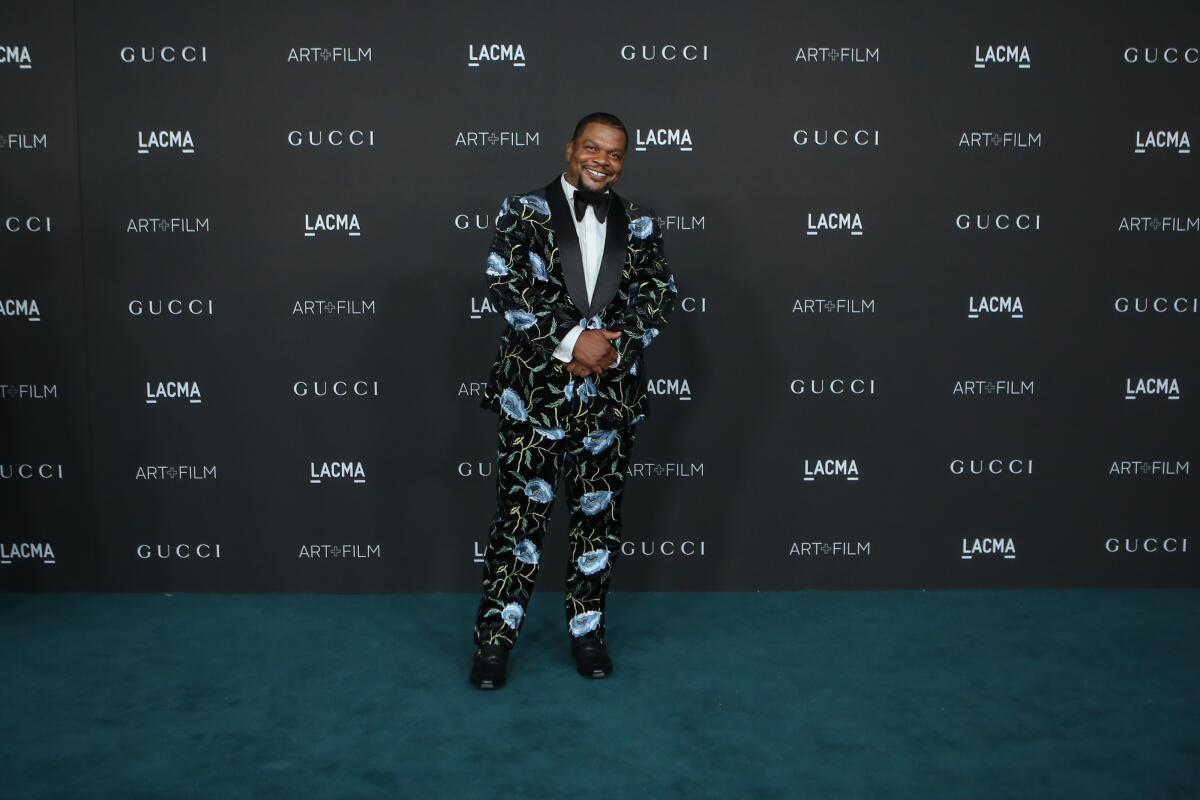
On and off the stage
The backdrop: the east coast of England in the wake of a series of natural disasters with nuclear consequence. The scene: a country house where a pair of retired scientists have taken up after a tsunami has flooded their house — where an unexpected visitor suddenly materializes. That’s the premise of Lucy Kirkwood’s “The Children,” which is now having its Los Angeles premiere at the Fountain Theatre. Times theater critic Charles McNulty reports that Kirkwood excels at “creating characters that audiences want to learn more about.”
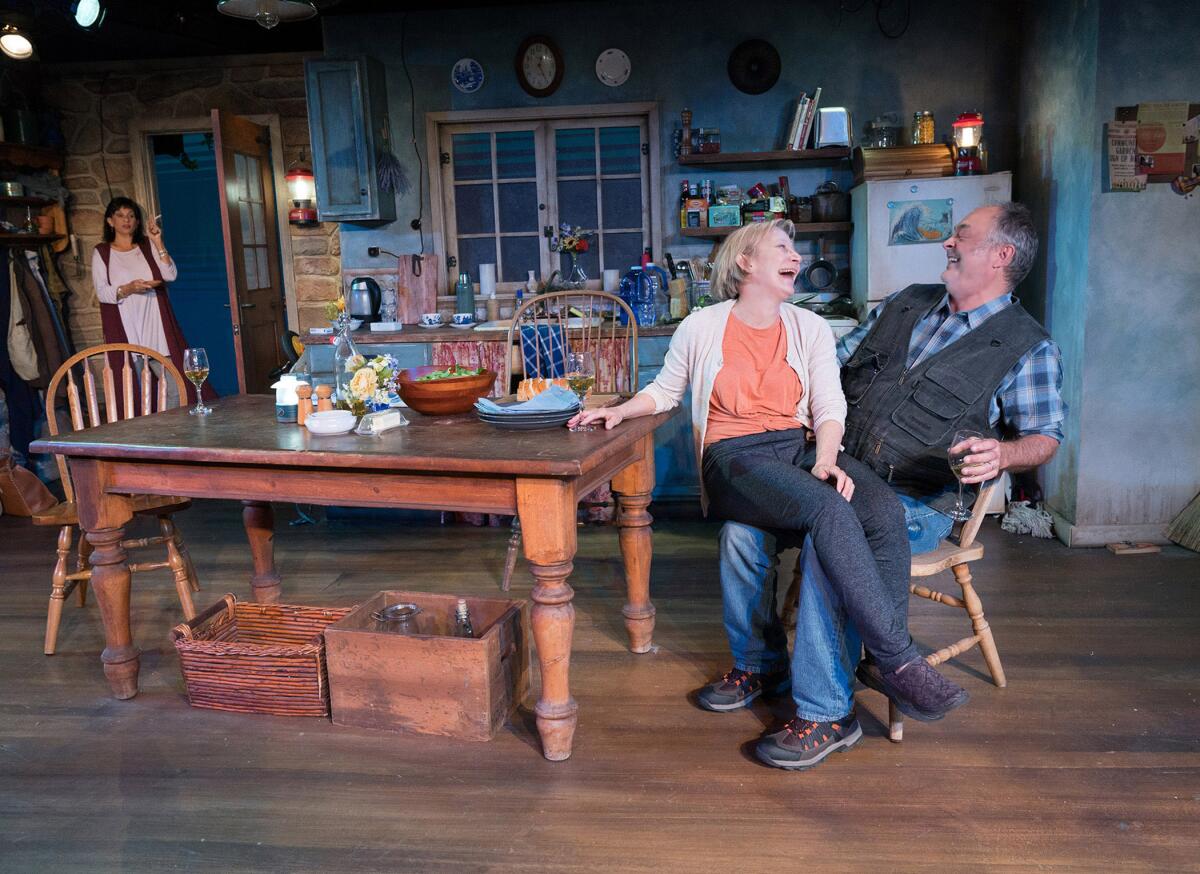
Members of the wardrobe department at the Hollywood Pantages Theatre, who are represented by IATSE Local 768, distributed leaflets outside the venue in an effort to demand better pay. Representatives tell my colleague Ashley Lee that they are paid less, on average, in comparison with fellow stagehands and receive less in benefits contributions.
Enjoying this newsletter? Consider subscribing to the Los Angeles Times
Your support helps us deliver the news that matters most. Become a subscriber.
Variety, comedy and magic shows — such as the events staged by the Magic Castle — tend to have lineups that are overwhelmingly filled by white male performers. Our new arts editor Paula Mejía reports on a show that premiered at the Yard Theater on Wednesday called “No Man’s Land,” which showcases a range of female-identifying performers. The goal of the program, says comedian and puppeteer Pam Severns: “Normalize female-dominated shows.” They’ll be back in December with a roster that includes drag comedians.
Classical notes
At Disney Hall, Susanna Mälkki took the conductor’s podium for her last concert of the season with the L.A. Phil, for a performance that included Rachmaninoff’s “Symphonic Dances,” Steve Reich’s “Runner” and a violin concerto by John Adams — with Leila Josefowicz on violin. Times classical music critic Mark Swed reports that two weeks of Mälkki is too little and that Josefowicz’s virtuosic playing “surfs waves of jubilant energy.”

Design time
Home design writer Lisa Boone has a look at how architects Melissa Shin and Amanda Shin of Shin Shin Architecture turned an illegal garage conversion that was large inhabited by cockroach carcasses into a graceful ADU. Click through to see the dramatic before-and-after pix.
Last week, I wrote about how UC Santa Barbara is moving ahead on a project to build a largely windowless dorm for more than 4,500 students. Now my colleague Teresa Watanabe looks at the student housing crisis that is precipitating such extreme architectural plans. “More than 16,000 students at the University of California and California State University were on waitlists for housing this fall,” she reports, “despite construction of 36,000 beds by both systems since 2015.” The pandemic isn’t helping.
Plus, CNN has a report on what it’s like to live in the largely windowless Michigan dorm designed by patron Charles Munger.
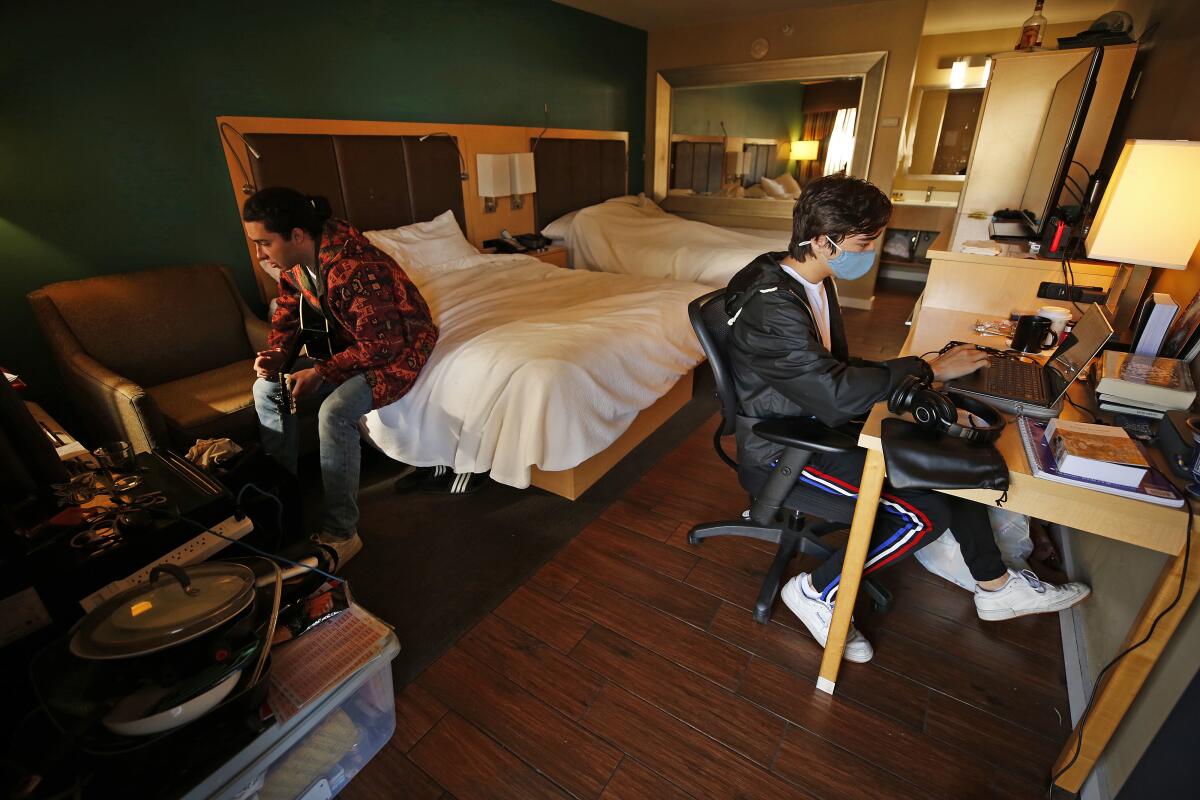
It’s the 85th anniversary of the San Francisco-Oakland Bay Bridge. The San Francisco Chronicle’s John King has a look at the designs that were not meant to be.
Essential happenings
The Los Angeles Chamber Orchestra makes its seasonal comeback with a bit of Beethoven, and “Head Over Heels,” a gender-bending comedy inspired by the music of the Go-Go’s, lands at the Pasadena Playhouse. Matt Cooper has these and all the weekends best events in his weekly listings digest.
Passages
Jonathan Reynolds, a screenwriter and playwright who also moonlighted as a food columnist, is dead at 79.
Bay Area sculptor Manuel Neri, who used plaster and bronze to create poetic depictions of the female form, has died at 91.
French literary scholar Sylvère Lotringer, a founder of the publishing imprint Semiotext(e), who helped connect post-’68 French theorists with U.S. artists of the ’70s, has died at 83. In an obit I co-wrote with my colleague Dorany Pineda, we cover the cinematic life of an intellectual who began life in hiding from the Nazis in France.
In other news
— Bernini’s “Ecstasy of Saint Teresa” gets some conservation love.
— The Oakland Museum of California has delayed a pair of exhibitions after suffering water damage.
— Mies van der Rohe’s Farnsworth House outside of Chicago is being rebranded the Edith Farnsworth House, to better recognize the woman who commissioned it.
— Hong Kong’s M+ Museum, which inhabits a new building designed by Herzog & de Meuron, has finally opened after years of delays. Now it faces the threat of government censorship.
— Since we’re on the subject of free expression in China: Ai Weiwei’s new memoir, “1000 Years of Joys and Sorrows,” has just landed, and he tells Times contributor Jordan Riefe that he was motivated to write it so that he might explain to his son “what life means to me, why freedom is so precious, and why autocracy fears art.”
— And since we’re talking books: I may just have to add Patricia Highsmith’s 999 pages of diaries to my reading list.
— New York Times critic Jason Farago reviews Hunter Biden’s artistic debut in New York. “The show is more substantial than an amateur’s dabbling,” he writes. But “it’s not the sort of exhibition that would make a current M.F.A. student feel jealous.”
— My colleagues Liam Dillon and Ben Poston have a fantastic story on how freeways displaced people of color and how recent expansions just keep the displacement going.
— Climate change in Venice, Italy — but make it fashion.
And last but not least ...
The Picasso that possibly belonged to Ernest Hemingway and was then allegedly used as payment for a drug run financed by Pablo Escobar. Not enough for you? There’s also an art-thieving former NFL player involved.
The biggest entertainment stories
Get our big stories about Hollywood, film, television, music, arts, culture and more right in your inbox as soon as they publish.
You may occasionally receive promotional content from the Los Angeles Times.




